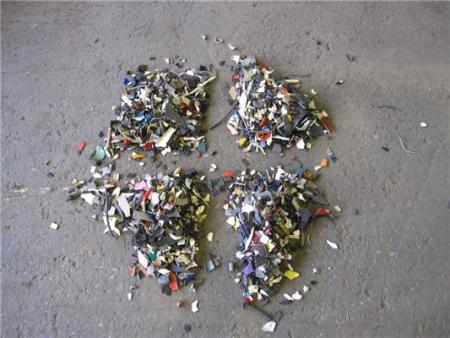The Waste Electrical and Electronic Equipment (WEEE) Forum, a non-profit association, has commissioned a team from the Empa’s Technology and Society Lab to evaluate the actual amounts of harmful substances in plastics produced from electrical and electronic equipment scrap in Europe.
 Before reusing materials, recycling companies sort and shred plastic housings, metal wires, and computer keyboards.
Before reusing materials, recycling companies sort and shred plastic housings, metal wires, and computer keyboards.
The harmful substances include mercury, lead, chromium, cadmium and certain brominated flame retardants, such as PBB, DecaBDE, OctaBDE and PentaBDE, in plastics.
Patrick Wäger, Mathias Schluep and Esther Müller from Empa along with a researcher from Bachema, a biotechnology company, have performed a study on 53 mixed plastic samples collected from scrap electrical and electronic equipment in 15 different European countries. The study results have revealed the presence of heavy metals or brominated flame retardants in all the samples and they varied only in concentration levels.
High level of brominated flame retardants has been found in plastic rear panels used in cathode ray tube monitors. However, the hazardous substances cannot be identified in plastic rear panels of flat screen monitors. Plastic samples from small domestic appliances have high concentrations of heavy metal or cadmium. In addition, high levels of lead have been discovered in mixed plastics from consumer electronics and information and communications technology. To eliminate the release of these harmful substances into the components used for new products and the environment, the team suggests that plastics produced as a result of electrical and electronic equipment processing need to follow strict quality management, till they are recycled or disposed.
The new WEEE LABel of EXcellence standard has integrated the Empa team’s study results. The standard directs the collection, treatment, disposal, reuse, storage, sorting and transport of electrical and electronic equipment.